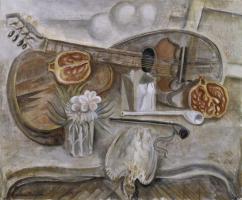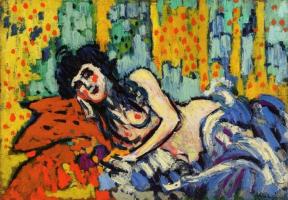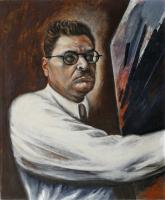The 25 most fascinating art movements of the 20th century
The artistic movements of the 20th century are currents of contemporary art that made originality, concept and the plastic language over and above the imitation of nature and the classic ideal of beauty, values in force until the 19th century. Thus, they radically changed the history of Western art.
As originality became a creative engine, since then a large number of movements have appeared, very different from each other. For this reason, in this article we present an orientation list of the most important artistic movements of the 20th century and their best-known authors, arranged chronologically.
1. Fovismo, 1904-1908

The fovism or fauvism It was a pictorial movement based on the extreme exaltation of color, with the purpose of asserting the creative instinct over aesthetic rationalization. Its most important exponents were Henri Matisse, André Derain and Maurice de Vlamink.
Watch Fauvism
2. Expressionism, about 1905-1933
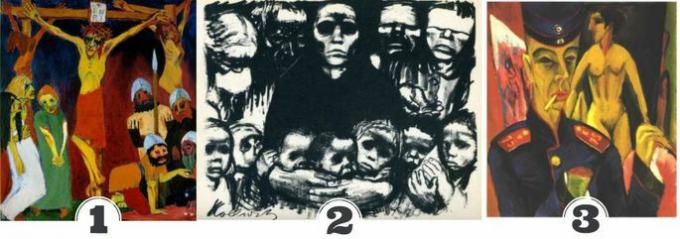
Expressionism was artistic, as well as cinematographic, musical, and literary. It was not a unified style, but its artists tried to offer a critical look at reality, perceived as a source of individual and social discomfort. It was expressed in various currents and groups such as The Blue Horseman and New Objectivity. Among her top representatives is her inspirer, Edvuard Munch, as well as Emil Nolde, Kathe Kollwitz, Ernst Ludwig Kirchner and Franz Marc, among others.
Watch Expressionism
3. Cubism, about 1907-1917

Cubism was a movement belonging to the so-called historical vanguards of the 20th century, those that manifested themselves up to the interwar period. It was characterized by the geometric synthesis of shapes and the representation of several planes in one. He also incorporated elements of primitive art, created techniques such as collage and gave typography a place on the canvas. Its main representatives were Pablo Picasso, Juan Gris and George Braque.
See also:
- Cubism
- Historical vanguards
4. Futurism, 1909-1920

Futurism was a pictorial and literary movement born with a manifesto written by Filippo Tommaso Marinetti, one of its greatest exponents. It was characterized by the cult of the machine and the representation of movement on the pictorial and sculptural surface. In addition to Marinetti, Giacommo Balla and Umberto Boccioni also stood out.
Watch Futurism
5. Lyrical abstraction, from 1910 onwards
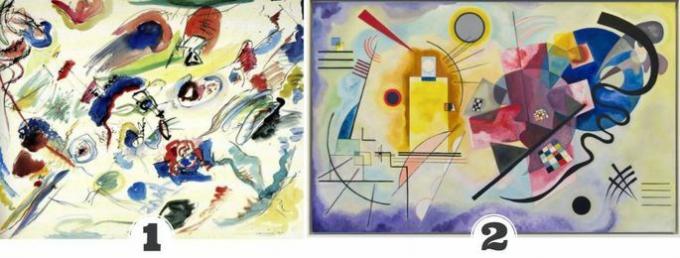
More than a movement, lyrical abstraction was a current that drove other movements, such as rayonism and abstract expressionism. Originally, he proposed to liberate art from the imitation of nature for the first time in the West. His technique was based on compositional freedom and the harmonic values of color, making plastic language the fundamental interest of the work. Its most prominent promoter was Vasily Kandisnky.
Watch Abstract art
6. Rayonism, around 1912

Rayonism is considered a movement inscribed in the current of lyrical abstraction. He focused his interest on the representation of light, rays, and color in ordered dynamic sequences. Its main exponents were Natalia Goncharova and Mikhail Lariónov.
7. Constructivism, approximately 1914-1935
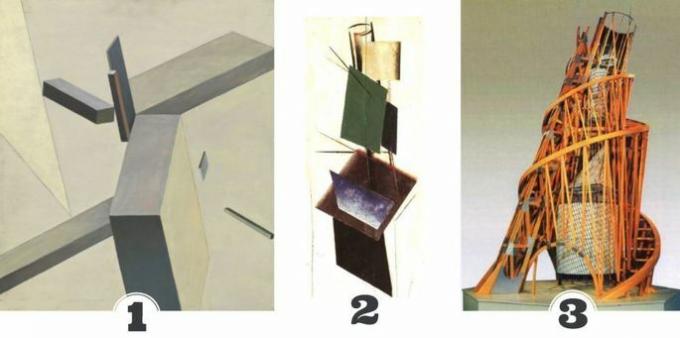
Shortly after lyrical abstraction, the trend for geometric abstraction emerged. The first specific movement of this trend was constructivism. He emphasized spatial geometry, the nature of materials, and construction principles. For this reason, it was closely related to architectural design and had a strong social and political vocation. Among its greatest exponents were El Lysitski, Aleksandr Ródchenko and Vladimir Tatlin.
8. Suprematism, approximately 1915-1923

Inscribed in geometric abstraction, he was essentially represented by Kazimir Malevich, who drew up his manifesto. His focus of interest revolved around plane geometry (rectangles, squares, circles and triangles) and as well as other basic compositional elements such as lines and crosses. Another prominent figure was Liubov Popov.
9. Dadaism, approximately 1916-1923
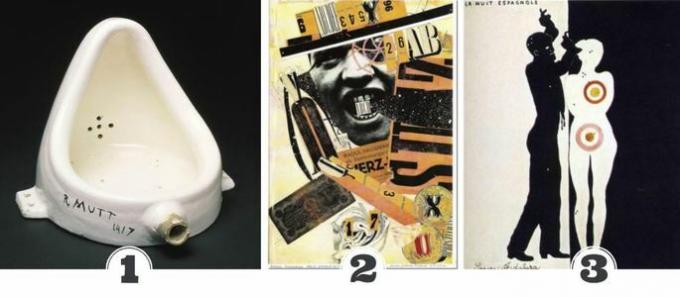
Dadaism was part of the historical avant-gardes, as were Futurism and Cubism. More than an artistic style, it was an anti-art, an affront to the bourgeois world and its sense of beauty. His works had a nihilistic perspective, and played with arbitrariness as an element of creation. Among its authors were Marcel Duchamp, Raoul Hausmann, Francis Picabia, Man Ray and Jean Arp, among others.
Watch Dadaism
10. Neoplasticism or De Stijl, 1917-1931
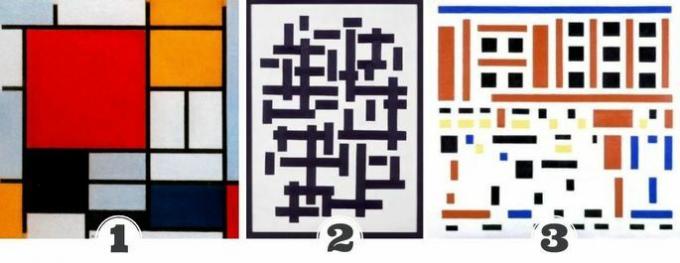
Neoplasticism was also inscribed in geometric abstraction. Its highest representative was Piet Mondrian, who used perpendicular lines as the main resource. The color palette was reduced to the bare minimum. The movement also known as De Stijl and was successfully expressed not only in collectible works of art, but also in applied arts, renewing industrial and graphic design. Other exponents were Theo van Doesburg and Bart van der Leck.
11. Bauhaus, 1919-1933

The Bauhaus was a German school of architecture, art, and design. Although the Nazi party closed it in 1933, during its operation it exerted a notable influence on the arts, photography, and architectural, graphic, and industrial design. The Bauhaus recovered functionality in design, wanted to bring artists and artisans closer together and modernized the productions of the century.
Its directors were Walter Gropius (founder), Hannes Meyer and Ludwig Mies van der Rohe. Great personalities of the time taught there, such as Lászlo Moholy-Nagy and Kandinsy.
12. Surrealism, 1924-1966

Surrealism was a movement of the interwar period. He was based on the psychoanalytic theory of Sigmund Freud, from which he proposed automatism as a method of creation, which favored diverse dreamlike and imaginative associations. Its greatest exponents were Salvador Dalí, Joan Miró and René Magritte, among others.
Watch Surrealism
13. Mexican muralism, 1920 onwards

Mexican muralism was a pictorial movement that sought to promote social awareness, exalt Mexican identity, and return art to its public function through the wall as a support.
It caused a real impact at the national and international level and, even today, many artists with political conviction adhere to its guidelines. Its most important representatives were Diego Rivera, David Alfaro Siqueiros and José Clemente Orozco.
Watch Mexican muralism
14. Art deco, 1910-1935 approximately

Art deco was a style of graphic, industrial and architectural design that was also expressed in the painting and sculpture of the so-called Belle epoque. It reached its peak after the First World War. It was characterized by symmetry, the use of a straight line, the zig-zag and compositional simplicity. Some of its greatest exponents were Tamara de Lempicka, Fellheimer and Wagner. Cassandre, Erté and William van Alen.
Watch Art deco
15. Abstract expressionism, approximately 1945-1965

The abstract expressionism movement was a movement expressed in two tendencies, close to lyrical abstraction. On the one hand, the action painting (action painting) or gesturalism. It was based on the technique of dripping, which consists of the blasting of paint. He was represented by Jackson Pollock, Franz Kline, and De Kooning.
The other trend was Color Field Painting or painting of color fields, which made large surfaces saturated with color, combining this with impressionist techniques such as the vibration between colors. His representatives were Clifford Still, Barnett Newman and Mark Rothko.
16. Pop art, approximately 1950-1980
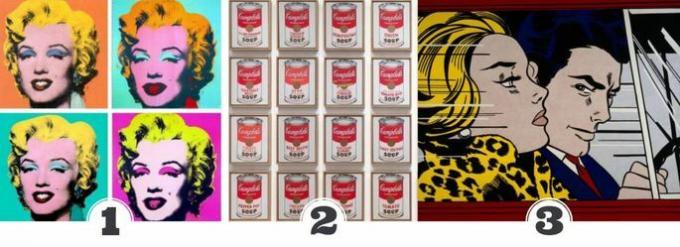
Pop art was a movement that incorporated the symbols of pop culture and consumer society into art, as well as the themes and forms of representation. In this way, he recognized the existence of mass culture in the artistic circuit. Its most famous representatives include Andy Warhol and Roy Liechtenstein.
Watch Pop Art or Pop Art
17. Kinetic art, 1954 onwards

Kinetic art is related to optical art, but unlike this, it is fundamentally concerned with incorporating movement within the work, either in a real or virtual way. Among its best known representatives are Jesús Rafael Soto, Carlos Cruz Diez, Francisco Sobrino Ochoa, Jean Tinguely and Julio Le Parc.
Watch Kinetic art
18. Optical art, 1964 onwards

Op art, in Spanish optical art, was a movement based on the search for visual illusions of different types. One of its most important exponents was Victor Vasarelly.
19. Happening Y performance, from 1960 onwards

The happening It is an artistic movement based on the principles of provocation, participation and artistic improvisation. Therefore, it is an interdisciplinary way.
The performance, like the happeningIt also involves performances of artistic improvisation and provocation, but unlike the previous one, it does not admit the participation of the public.
Both have the characteristic that they flow in time, that is, they are a phenomenon and not a finished object.
20. Concept art, from 1960 onwards

Concept art was an artistic trend that developed in the mid-1960s. In this trend, the concept takes precedence over the actual artistic object. In some cases it meant the breakdown of the concept of art as a collectible object and the appearance of new expressive resources. Among its greatest exponents are Joseph Kosuth, Yoko Ono, León Ferrari and Harriet Bart.
21. Art povera, around 1965 onwards
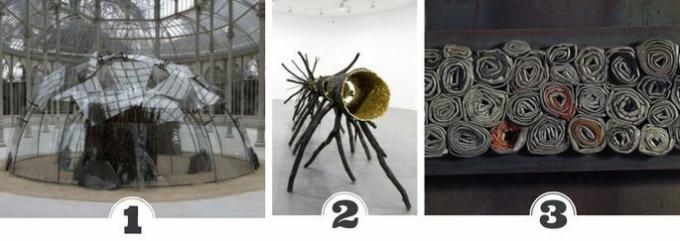
The expression povera art it is translated into Spanish as poor art. It is a movement originated in Italy that was interested in "poor" materials, that is, not industrialized or untreated, such as rope, canvas, rocks, plants, logs, etc. The transformation plays an important role, since to the extent that the materials suffer alterations over time, the work is also modified. Among the most prominent artists are Mario Merz, Giuseppe Penone and Jannis Kounellis, among others.
22. Land art, from 1968 onwards

The Land art, also known as Earth art, in a movement that integrates art and environment (landscape). The location and the materials are nature itself, which is aesthetically intervened by the artist. Therefore, the works tend to have a sculptural and architectural character at the same time. This type of art is kept in outer space, so it undergoes its own modifications that the climate induces on nature. Therefore, some works are not preserved. Its representatives include Robert Smithson, Karl Prant, Alice Adams, Phil Matthews and Jacek Tylicki.
23. Hyperrealism, since the late 1960s

Hyperrealism or radical realism was a plastic movement considered as a reaction to non-object, conceptual or Dadaist approaches. He tried to reproduce reality as accurately as the eye can perceive it, even in its less aesthetic details. It was expressed in variants such as photorealism and conceptual realism. Its artists include Carole Feuerman, Duane Hanson, Mary Pratt, Jhon Davies, Jhon de Andrea and Segal.
Watch: Hyperrealism
24. Minimalism, since 1960
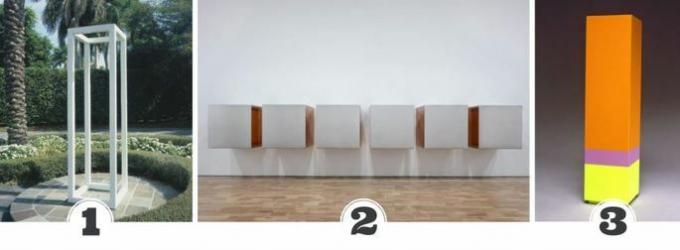
Minimalism or Primary Structures was an American movement that reacted against Abstract Expressionism and Pop Hedonism. Inspired by constructivism, he promoted the idea of repetition as an image of infinity, and associated it with concretism and structuralism. Among some of its representatives are Donald Judd, Sol LeWitt and Anne Truitt.
25. Urban art, since 1975
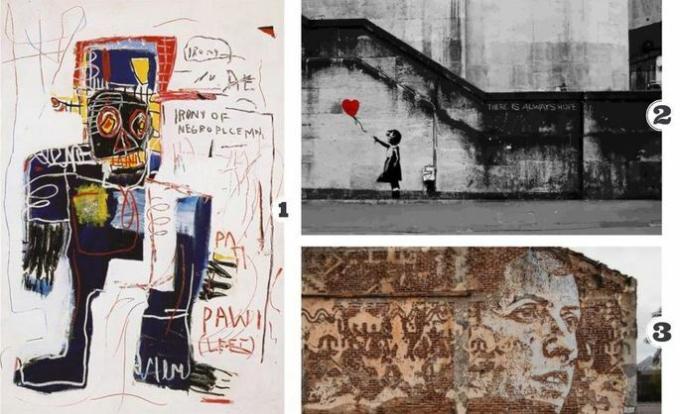
The street art, also called street art or urban art, brings together various artistic expressions that use plastic language street or that use urban elements as supports (walls, train cars, pavements, ceilings, telephone boxes, etc.). The techniques are diverse: poster design, stencil, graffiti, collage, stickers, screen printing, reuse, etc. One of its first prominent exponents was Jean-Michel Basquiat. Currently, its representatives include Banksy and Vhils.
It may interest you: Bansky's most famous works

